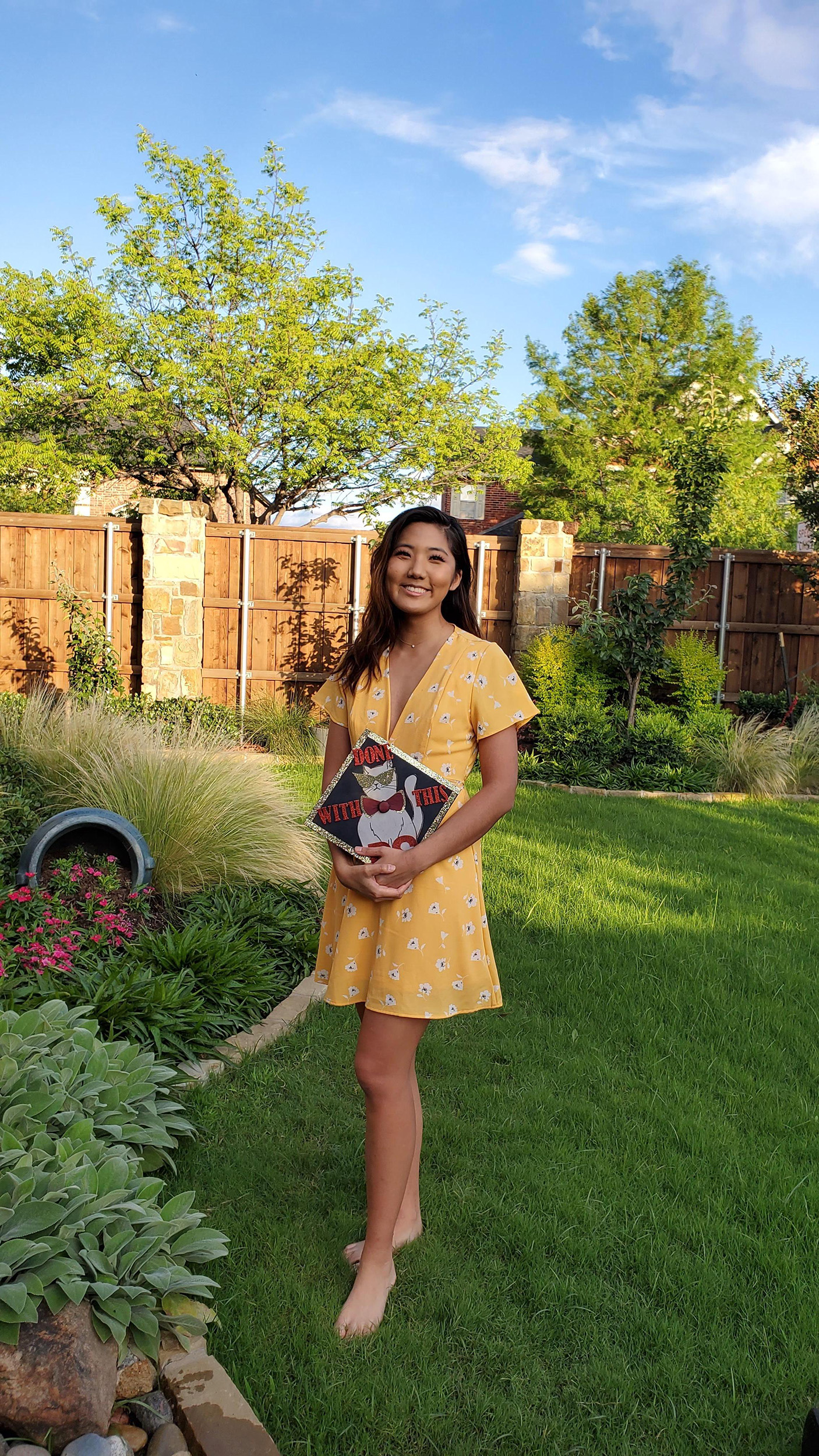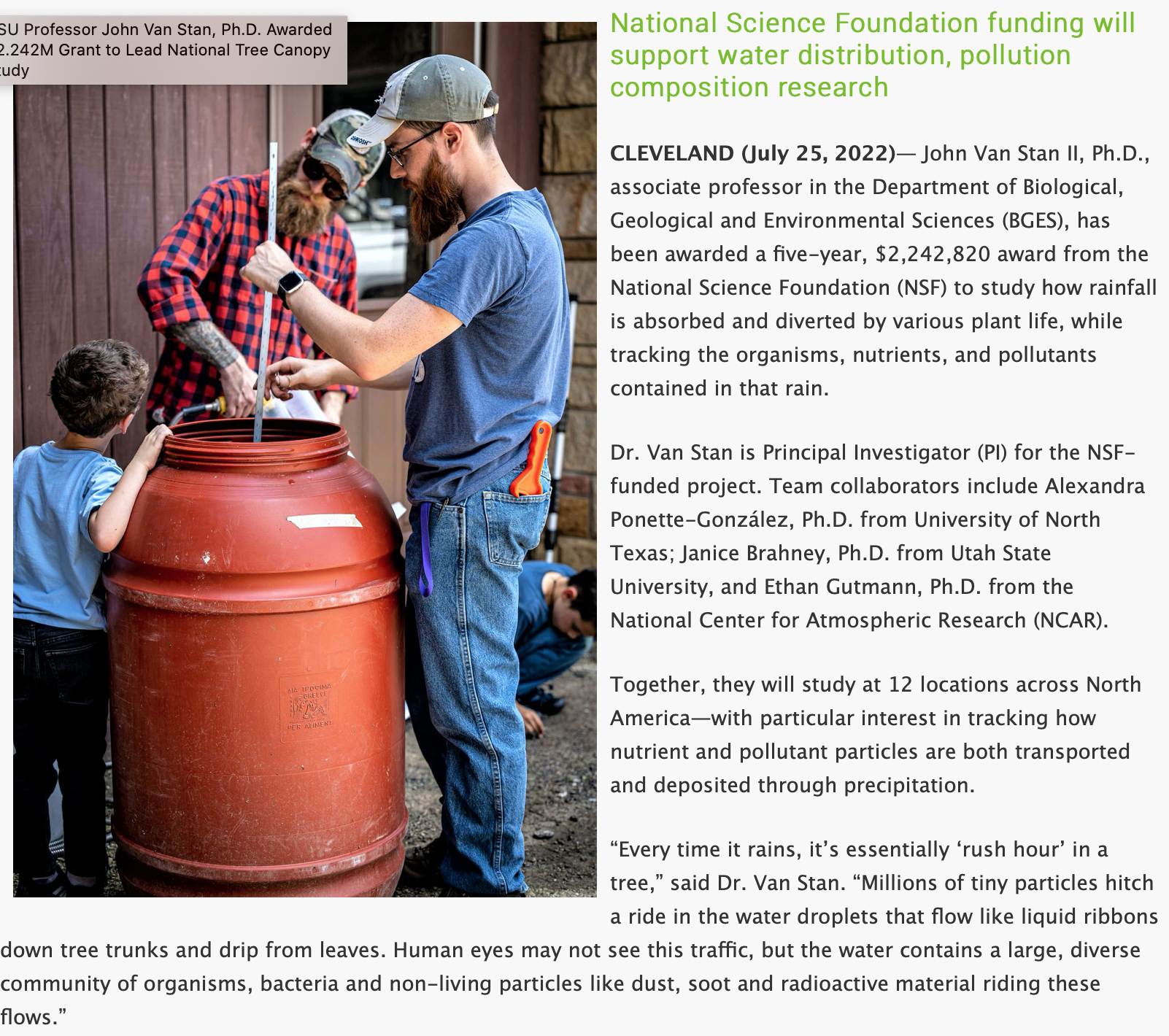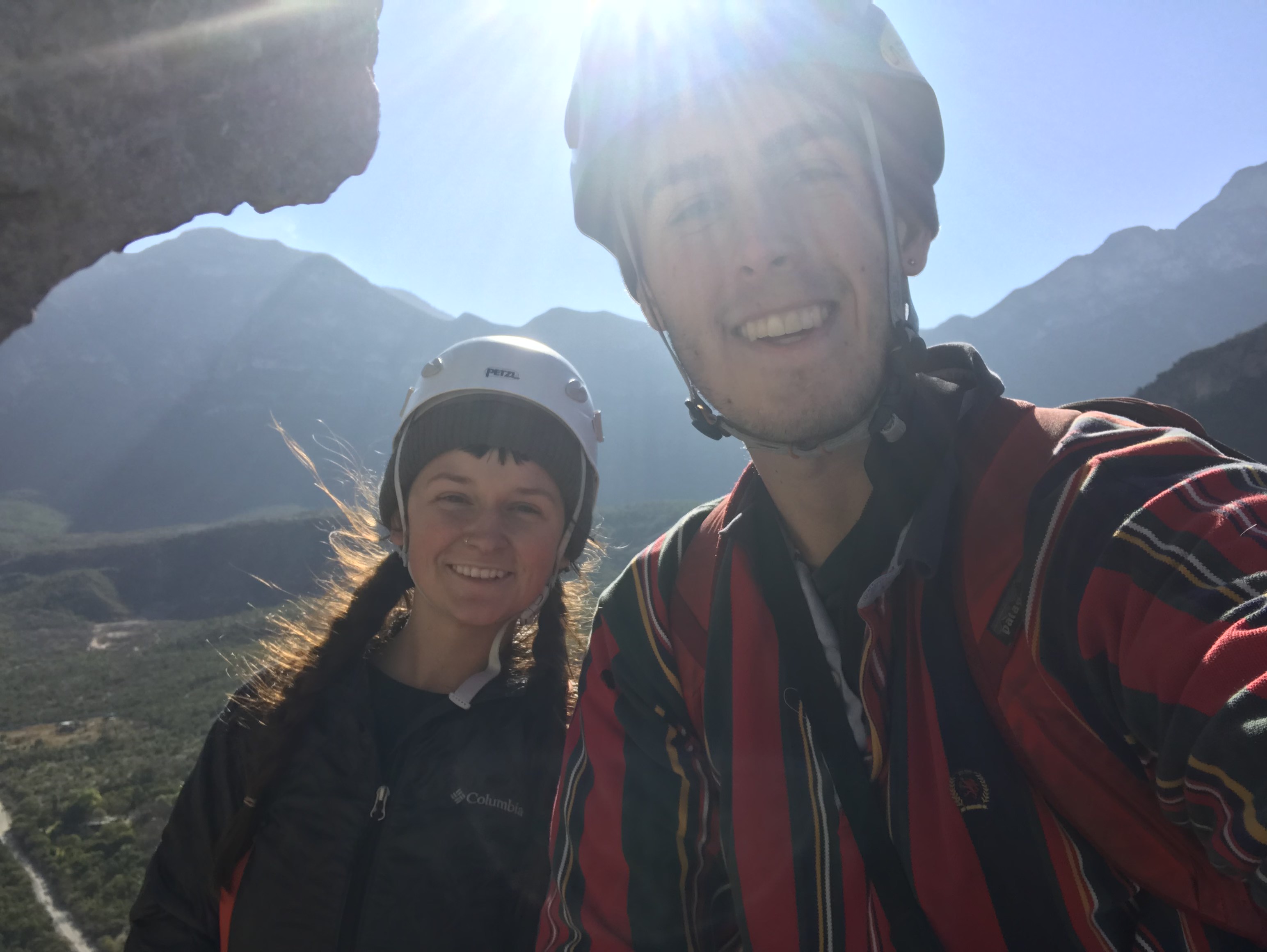News & Media
Abbi Anderson and Evan Klansnick received support from the U of Utah Undergraduate Office to continue doing reserach in the Ecosytems Lab.
Abbi will be a Undergraduate Research Opportunity Program (UROP) scholar in spring 2026 and will pursue a project called “The Color of Rain - A Visual Archive of Particulates in Precipitation“. So cool, Abbi!Evan will be a second time Wilkes Scholar in spring 2026 and will continue his research on “Protecting residents from heat and PM”. Go Evan!
Yarong presented her compound exposure research at the Association of Collegiate Schools of Planning conference.

Yarong Cao won 3rd prize in the Wilkes Summit poster contest! Congrats Yarong for your awesome research on co-exposure to heat and air pollution!

Talon Roberts graduated with a Master in City and Metropolitan Planning this May! Congrats Talon!

Ripley Dossett at CSBS day - why aren’t folks discussing water getting quoted in the news? Way to go Ripley!


Rylee Babino presented research on riparian policy and protection at the SWSIE (Southwest Sustainability Innovation Engine) symposium. Go Rylee!

Abbi Anderson presented an awesome poster at the UU Undergraduate Research Symposium.

Ripley Dossett featured by the School of Environment, society, and Sustainability

Yarong Cao presented her master’s research on ecologial networks at the Great Plains/Rocky Mountains Division of the AAG Meeting.

The Marathon Begins
Sampling 240 trees for particulate matter across 3 cities...Spring Season
Day 1, Thursday
- Samples arrive from Eugene
- Everyone nervous, getting into a rhythm
- Long day - left at 9pm (18 samples done)
Day 2, Friday
- We are exhausted
- Rocker vacuum pump breaks
- We resort to hand pumping -- very fun
- Noortje fixes vacuum pump
- Lond day - left at 7 pm (18 samples done)
- Noortje and Alex on their own in the lab
-
Pretty seamless day, trying new tricks
- Left at 5 pm! (12 samples done)
and then i failed to update this.
Day 22, it ends
Emma Glende presented her undergraduate research on resident tree preferences at the Undergraduate Research Symposium.

Katherina Kang is moving to Delaware to begin a Ph.D.!

Katherina Kang was accepted into the Plant and Soil Sciences Ph.D. program at the University of Delaware and was selected for a University Graduate Scholar Award. She will be working as a graduate research assistant with Dr. Tara Trammell in research focused on urban forestry and ecology. CONGRATULATIONS KAT!!!
Savannah Thomas shows some swagger at SWAAG. Congrats on earning 2nd place!



3 PhD Opportunities - Digital Tools in Urban Forestry


NBCDFW covers new DISES research
 https://www.nbcdfw.com/news/local/unt-researchers-study-equity-of-digital-tools-for-urban-forest-management/3098964/
https://www.nbcdfw.com/news/local/unt-researchers-study-equity-of-digital-tools-for-urban-forest-management/3098964/Sarah Pettyjohn in the midst of an awesome Sustainable Groundwater Resources Research Experience for Undergraduates at San Francisco State University


Sarah is working with with Dr. Bray on geomorphological research. In her own words.
I began the project by separating pieces of volcanic tuff into four different mass groups: very narrow, narrow, wide, and very wide (rocks with...same mass, a little variation in mass, more variation in mass, and a large variation in mass). I then took the weight, axes measurements, and photos of the very narrow batch, before placing them into the tumbling mill for the first run. The amount of time that the tumbling mill runs for is associated with the "distance traveled", as if they are traveling through a river. In between each run, I take the weight, measurements, and photos of the batch again to log the changes. This process is continued until the total amount of mass lost has reached 10%. This is to better understand and compare wear rate and distance traveled to other rock types. After the photo logs are uploaded, I have used an imaging software, called ImageJ, along with Matlab, to collect further measurement data and closely observe physical changes. After each tumble, I have collected the water and silt and left it to settle. So far, I have done 5 tumble runs for the very narrow batch and reached a total of 7.18% mass lost. This research is important in gaining a better understanding of how volcanic tuff moves and changes within a river, and how those changes impact the river as well as the surrounding ecosystem.
Shritha Gayathri presents research at UNT undergraduate student symposium and Scholars Day

This year, I had the opportunity to conduct research on the effects of particulate matter accumulation on the health of live oak trees. It was an amazing experience overall, starting from learning how to sample and perform spectroscopy on leaves, to presenting my own research poster at UNT Scholars’ Day and the GSA/SER Conference. I had the chance to meet other talented researchers, listen to insights from knowledgeable professors, and share my findings to other passionate students. I’m super grateful to have worked on this project alongside an amazing team, which consisted of Cody Kimpton, Jennifer Ellis, and Dr. Alexandra Ponette-González. My first year of research was one full of discovery, excitement, and learning, and I’m looking forward to pursuing new projects and ideas in the future!
Cody Kimpton presents research at UNT undergraduate student symposium!

At both UNT Scholars Day and the GSA & SER undergraduate research symposium, I presented my research poster "All Roads Lead to Polluted Air? Particulate Matter Accumulation by Live Oaks on UNT Campus" about the particulate matter (PM), or pollution, accumulation on leaves of live oaks and comparing the amount of PM on the trees near roads against the amount of PM on trees further from roads. With help from Shritha Gayathri, Jennifer Ellis, and Alexandra Ponette-González, we collected and analyzed the data I used to make my poster. Presenting was extremely fun (after you get over the presentation jitters) and I learned a lot, both from people commenting on my research and from listening to other students present their research! Both Scholars Day and the GSA & SER Research Symposium were great experiences, and I would encourage other students to participate in upcoming years!
Savannah Thomas and Cody Kimpton present research on post-COVID national park visition at SWAAG

Check out the story map here! https://storymaps.arcgis.com/stories/fbb20c1589ce40799e187a5203527ed1

The Ponette-Gonzalez and Fry labs and a few other UNT geo students!
New reserach published in Frontiers in Ecology and the Environment!
 https://news.unt.edu/news-releases/radioactive-rain-hitchhiking-tardigrades-particulates-precipitation-have-big
https://news.unt.edu/news-releases/radioactive-rain-hitchhiking-tardigrades-particulates-precipitation-have-bigKatherina Kang begins new position at Groundwork Dallas in Texas.
Katherina is the new Education Director at Groundwork Dallas! Her work is focused on organizing and engaging youth throughout the Dallas-Fort Worth area to become more knowledgeable about the environment. She coordinates outdoor activities, projects, and trips for volunteers and members, opportunities for participants to learn about various facets of environmental science and engage with the natural world. She is contributing to the creation of a "Green Team", a volunteer group comprised of high school-aged youth who work on specialized projects and skills such as designing and planting pollinator gardens, undergoing training and certification in water testing, conducting environmental quality research, and much more. We are proud that you are making a difference in the world Katherina!
This group, led by Katherina Kang (far right), built a native pollinator garden in Dallas Hines Park to help out the monarchs on their migration north.
Black carbon on bird feathers: what they tell us about urban air pollution

Claire Pitre published her research in Environmental Monitoring & Assessment!
UNT alumnus Claire Pitre and a team of interdisciplinary UNT researchers recently published their pilot study investigating the accumulation of black carbon pollution on bird feathers. Black carbon, commonly known as soot, is a component of airborne particulate pollution and has harmful effects on air quality and human health. Under the mentorship of Dr. Alexandra Ponette-Gonzalez and other professors from the UNT Departments of Geography and the Environment (Matthew Fry), Biological Sciences (Jeff Johnson), and Studio Art (Dornith Doherty), Pitre conducted a study to quantify accumulated black carbon particles on chicken feathers at two different urban sites in Denton, Texas. The researchers found that feathers exposed to ambient air pollution near Highway I-35E accumulated approximately eight times more black carbon than feathers near a bus stop on UNT’s main campus. The study’s manuscript draws attention to the potential of bird feathers to be used as biomonitors for particulate air pollution, and has just been published by the peer-reviewed journal Environmental Monitoring and Assessment.
Pitre, C., A.G. Ponette-González, J.E. Rindy, *A. Lee, D. Doherty, M. Fry, J.A. Johnson. 2021. Bird feathers are potential biomonitors for airborne elemental carbon. Environmental Monitoring and Assessment 193: 35, https://doi.org/10.1007/s10661-020-08804-2
Free access to the article is available here: https://rdcu.be/cdbsB
Congrats to Jen Ellis for receiving the department’s Physical Geography Scholarship!
Congrats to Thomas for taking 3rd place in the Graduate Student Paper Competition at the Southwestern Division of the American Associaton of Geographers Meeting!
Thomas and Jen presented their research...
at the National Atmospheric Deposition Program Scientific Symposium and the Southwestern Division of the American Association of Geographers Meeting this fall. Screenshots of their presentations follow! Jen’s work on particulate matter deposition to bird feathers garnered lots of ohhhhs and cooollsss...

Pigeon hunting...
Jen has spent a big chunk of the summer trapping urban pigeons for her research on particulate matter deposition to bird feathers. Don’t worry, she catches them, plucks a few feathers, and then releases them safely back into the city. The journey isn’t over. Pigeons are smart. Seeing them is one thing, catching them is another!


Loitering pigeons!
Congrats to Katherina Kang for receiving her M.S. in Geography and the Environment !


Alex presented integrative science-art research at AGU
Katherina Kang wins SWAAG student paper competition! Woot!

Ecosystem geography lab makes a showing at SWAAG
Our ES&T article is getting some press!
- https://www.nsf.gov/discoveries/disc_summ.jsp?cntn_id=299154&org=NSF&from=news
- https://phys.org/news/2019-09-oak-trees-southern-cities-natural.html
- https://www.technologynetworks.com/applied-sciences/news/oak-trees-are-natural-urban-air-filters-323697
-
https://dentonrc.com/entertainment/denton_dammit/we-re-denton-dammit-a-farewell-to-mr-woody/article_11720bea-22e8-506b-b752-999667b28638.html
-
https://dallasinnovates.com/discovery-unt-finds-oak-trees-scrub-black-carbon-from-atmosphere-utsws-obesity-research-leads-to-surprise/
- https://www.jornada.com.mx/ultimas/ciencias/2019/09/09/especies-de-robles-eliminan-carbono-negro-de-la-atmosfera-1433.html
- 4 Awesome Discoveries You Probably Didn’t Hear About - Episode 33
Art meets science: UNT students and faculty combine their talents to find out what bird feathers reveal about air quality

These raku ceramics by Anna Lee reveal delicate feather imprints, https://www.annachristinelee.com/biocv
Pollumage is up!

When birds fly through the atmosphere, they travel through a dynamic and fluid suspension of particles, including microscopic bacteria, pulverized dust, and black carbon (soot). Invisible to the naked eye, the microstructure of birds’ interlocking feathers serves as a filter, collecting and trapping tiny airborne particles. Because of this, birds can be used as biological monitors (biomontors) of the air pollution that surrounds us. Black carbon is one of the smallest particles in this dynamic and fluid suspension, but it has one of the largest impacts on climate and human health. Pollumage, a radically integrative art-science project, presents the scientific process behind and features artworks inspired by a multivalent research project on birds as biomonitors of black carbon air pollution.
The outcome of two years of collaboration and an “Air Rights, Space, and Materiality” Working Group, the exhibition features work by faculty members Dornith Doherty, Alexandra Ponette-González, Matthew Fry, Jeff Johnson, and Undergraduate Research Fellows Anna Lee and Claire Pitre.
Jenna accepted into Ph.D. program at Boston University!
Jenna will be pursuing a fully funded Ph.D. in Biology under the mentorship of Dr. Pamela Templer, http://people.bu.edu/ptempler/
How much soot do birds collect as they fly through the air? We wanna know.
#pollumage
 Contributors: AG Ponette-Gonzalez, Dornith Doherty, Claire Pitre, Anna Lee, Matt Fry, Jeff Johnson
Contributors: AG Ponette-Gonzalez, Dornith Doherty, Claire Pitre, Anna Lee, Matt Fry, Jeff JohnsonClaire, Brett, Maggie, and Jose completed an 8-pitch (11a) route in Potrero Chico![]()
![]()
![]()
![]()
Brett graduated with big honors (Summa Cum Laude) in December. Like a true geographer, he will be hiking the Appalachian Trail this March!

Brett takes 1st (paper) and Claire takes 2nd (poster) in the undergraduate student competitions and Kat rocks the house in the graduate competition at the Southwestern Division of the AAG!

Katherina Kang presents her graduate student research at SWAAG
 Claire Pitre presents her poster at SWAAG.
Claire Pitre presents her poster at SWAAG.
And congrats to our UNT Geobowl team took 3rd place! From left to right: Claire Pitre, Katherina Kang, Melissa Barnett (advisor: Tiwari), Katie Krupala (advisor: Chatterjee), Brett Luce, Brad Raines (advisor: Williams).
Read here: Diversity Initiatives Do Pay off
Our new Sunset Organic Carbon/
Elemental Carbon Analyzer is up and running!
Before: anxiously awaiting arrival of the new OC/EC.




︎
![]()
![]()
![]()
April 20, 2018
Brett receives outstanding undergraduate award and Jenna recognized for academic excellence at 2018 banquet!



︎
![]()
Brett successfully defended his honor’s thesis. He rode over 400 km for a fall’s season worth of data on PM2.5 concentrations in Denton. He is still riding and collecting spring data. Stay tuned!
Congrats to Brett for defending his Honor’s thesis!!
Brett successfully defended his honor’s thesis. He rode over 400 km for a fall’s season worth of data on PM2.5 concentrations in Denton. He is still riding and collecting spring data. Stay tuned!
︎
![]()
Jenna with her Dad who visited from Slippery Rock U.
![]()
Tate, Jenna, and Alex on the big day (March 2018).
︎
Happy 21, Brett!
︎
![]()
![]()
Congrats to Jenna for defending her M.Sc. thesis!!

Jenna with her Dad who visited from Slippery Rock U.

Tate, Jenna, and Alex on the big day (March 2018).
︎
Happy 21, Brett!
![]()
︎
Denia Neighborhood Meeting
Alex and Jenna were invited to speak at the Denia Neighborhood Meeting about the urban air filters project on February 26, 2018. They provided a brief overview of the preliminary results of the meeting. Jenna is on a quest to get our results out!

︎
![]()
![]()
![]()
Honey Run 2018!
Squad BC and friends ran the Denton Honey Run in 28 degree weather. Jenna and Matt ran with their honeys (JT and Roanne, respectively) and Jenna and JT lost their legs! Brett won 3rd place!

︎
American Geophysical Union Fall Meeting
Alex, Tate, and Brett attended AGU 2017 in New Orleans. No pictures. We forgot. Boo.
American Geophysical Union Fall Meeting
Alex, Tate, and Brett attended AGU 2017 in New Orleans. No pictures. We forgot. Boo.
︎
National Atmospheric Deposition Program Technical Meeting
Alex and Jenna attended the 2017 NADP Technical Meeting in San Diego, California.
Jenna won 1st place in the graduate student poster competition for her poster “Atmospheric Elemental Carbon (EC): Deposition to Oak Trees and Litterfall Flux to Soil in an Urban Area”.
Alex and Jenna celebrated with a kayaking trip!
![]()
National Atmospheric Deposition Program Technical Meeting
Alex and Jenna attended the 2017 NADP Technical Meeting in San Diego, California.
Jenna won 1st place in the graduate student poster competition for her poster “Atmospheric Elemental Carbon (EC): Deposition to Oak Trees and Litterfall Flux to Soil in an Urban Area”.
Alex and Jenna celebrated with a kayaking trip!

︎
Jenna and Brett attended the 2017 Southwest Division of the American Association of Geographers Meeting in Huntsville, Texas.
Jenna won 2nd place in the graduate student paper competitionfor her master’s thesis research “Urban trees as sinks for soot: Elemental carbon retention on leaves and litterfall deposition to soil”.
Brett Luce won 1st place in the undergraduate student poster competition for his honor’s thesis research “Urban cyclist exposure to fine particle pollution in a rapidly growing city”.
![]()
![]()
![]()
Southwestern Division of the American Association of Geographers Conference
Jenna and Brett attended the 2017 Southwest Division of the American Association of Geographers Meeting in Huntsville, Texas.
Jenna won 2nd place in the graduate student paper competitionfor her master’s thesis research “Urban trees as sinks for soot: Elemental carbon retention on leaves and litterfall deposition to soil”.
Brett Luce won 1st place in the undergraduate student poster competition for his honor’s thesis research “Urban cyclist exposure to fine particle pollution in a rapidly growing city”.



︎
UNT undergraduates made a short documentary film about our research on urban air filters!
Our CAREER grant looking at the potential for urban trees to serve as urban air filters was featured on the UNT news website:
Read here: UNT geographer receives NSF CAREER Award
Read here: UNT research team analyzing effectiveness of trees in capturing air pollution
UNT undergraduates made a short documentary film about our research on urban air filters!
Our CAREER grant looking at the potential for urban trees to serve as urban air filters was featured on the UNT news website:
Read here: UNT geographer receives NSF CAREER Award
Read here: UNT research team analyzing effectiveness of trees in capturing air pollution
︎
Our research “Sustainable science? Reducing the carbon impact of scientific mega-meetings” was highlighted in Nature. Rosen, J. 2017. Sustainability: A greener culture. Nature 546: 565-567.
Our research “Sustainable science? Reducing the carbon impact of scientific mega-meetings” was highlighted in Nature. Rosen, J. 2017. Sustainability: A greener culture. Nature 546: 565-567.
Read Here: Sustainability: A greener culture
︎
Our research “Hydrologic connectivity in the high-elevation tropics: heterogeneous responses to land change” was featured on the cover of BioScience.
Our research “Hydrologic connectivity in the high-elevation tropics: heterogeneous responses to land change” was featured on the cover of BioScience.












